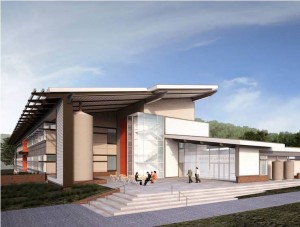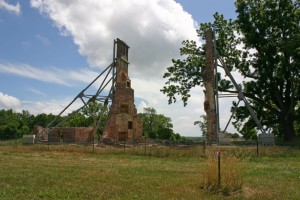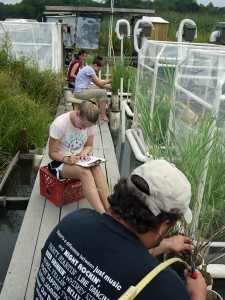The Smithsonian Environmental Research Center’s outreach coordinator, Karen McDonald, has assumed a second title: beekeeper. This spring she and Elio Cruz, from the National Museum of Natural History, set up three hives in a remote field on SERC’s campus. The bees feast on the nectar and pollen of tulip poplars, walnut trees, clover and other nearby plants. With help from NMNH’s Insect Zoo, McDonald is doing her part to help the struggling bees.
Have scientists figured out what’s causing Colony Collapse Disorder (CCD)?
No. They’ve been studying the large-scale losses of hives since American beekeepers began reporting the phenomenon in 2006. Scientists think a combination of factors—not just one—is leading to CCD. They’re currently exploring the role of pesticides, parasites, pathogens and overall stress on the bees.
They produce honey, they sting…what else do bees do?
Humans, not to mention, alfalfa, apples and almonds owe a great deal of gratitude to the honey bee. In its quest for nectar and pollen, one bee can visit several thousand flowers in a single day. In the United States, more than 3.5 million acres of crops rely on bees for pollination, which helps the plant’s flowers turn into fruits and nuts. That figure doesn’t include all the wild plants that need bees as well.
What do you find most interesting about the insect?
It’s amazing to me that they live—and work—mostly in the dark. The bees seal the hives with propolis, a sticky resin collected from plants. This helps them regulate the temperature of the hive. The dark also helps them secrete more wax for the comb. Without light, bees communicate by touch, smell and taste. The queen produces chemical pheromones that tell the worker bees that everything in the hive is okay. And after collecting nectar and pollen, workers return to the hive and perform waggle dances to communicate where they gathered the food. Again it’s all in the dark, so the others line up behind the returning bee as it dances and tap it with their antennae to figure out where the nectar and pollen are. Bees can even distinguish intruder bees from other hives simply by their smell; it’s a remarkable set of adaptations.







